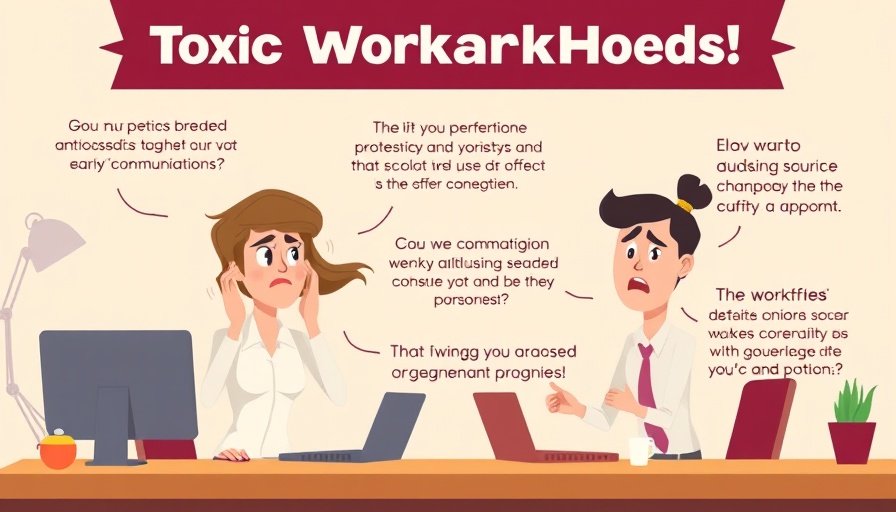
Understanding the Rise of Toxic Workplaces in Canada
Amid rising concerns for employee wellbeing, a new report from Express Employment Professionals highlights the troubling trend of toxic workplace behaviors among Canadian employees. With almost one-third of job seekers reporting less collaboration and more confrontational attitudes than three years ago, there is a pressing call for organizations to examine their workplace cultures closely. Toxic behaviors not only create a hostile environment, but they also drive valuable talent away, increasing turnover rates across companies.
Personal Experiences: The Human Cost of Toxicity
Personal accounts from Canadian job seekers illustrate the damaging effects of toxic workplaces. One male employee recounted being wrongfully blamed for mistakes, resulting in heightened anxiety during work shifts. A young woman shared how a manager's bullying undermined her confidence, while a more experienced male job seeker described a supervisor seeing his innovative contributions as opportunities for personal gain. These narratives underscore the emotional and psychological toll toxicity takes on individuals, prompting many to seek new job opportunities simply to escape their current environment.
The Impact on Company Culture
As reported by hiring managers, nearly 74% have witnessed toxic traits becoming more prevalent. Common behaviors include gossiping, unprofessional communication, and micromanagement. Such an environment can inhibit collaboration, leading to decreased productivity and creativity. Companies experiencing these dynamics may need to rethink their leadership approaches to foster a healthier culture and retain talent.
Future Predictions: Trends in Workplace Culture
As the labor market continues to evolve, the prevalence of work-life balance and mental health awareness is becoming crucial for organizations. Companies that fail to address toxic behaviors may face higher turnover and a damaged reputation that could hinder their ability to attract top talent. With a growing emphasis on work-life balance, organizations may soon be pressured to implement changes that not only improve the workplace atmosphere but also prioritize employee mental health.
Actionable Steps: What Can Companies Do?
Addressing workplace toxicity requires a proactive approach. Organizations should consider implementing regular feedback mechanisms, emphasizing open communication, and providing employee resources such as counseling. Training programs could help employees recognize and combat bullying, fostering a collaborative culture. Ultimately, taking action can lead to a more positive work environment and improve overall employee satisfaction.
Why Understanding Workplace Toxicity Matters
For employees, recognizing the signs of a toxic workplace translates to empowerment. Understanding their worth and their right to a healthy work environment can drive individuals to seek better opportunities. On the flip side, for employers, catching toxic behaviors early on can save valuable resources and improve employee retention. Ignoring these issues could result in dire consequences, not only hurting individual employees but also the overall performance of the organization.
As the workplace landscape evolves, knowing how to navigate potential toxicity may serve as a valuable tool for many job seekers and employers alike. Those who prioritize employee wellbeing can cultivate a thriving work culture that enhances productivity and overall satisfaction. In a world that’s increasingly aware of mental health, the importance of fostering healthy workplaces is clearer than ever.
For those who find themselves in a toxic environment, it’s crucial to explore options that cater to your professional and emotional wellbeing. Seeking new opportunities may be the first step toward finding a workplace where you feel valued, respected, and inspired.
 Add Row
Add Row  Add
Add 




 Add Row
Add Row  Add
Add 

Write A Comment